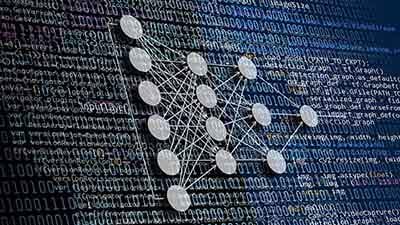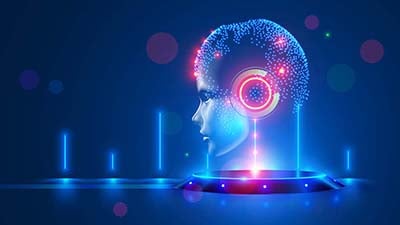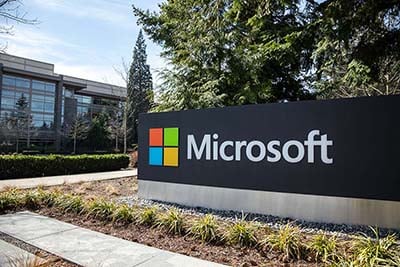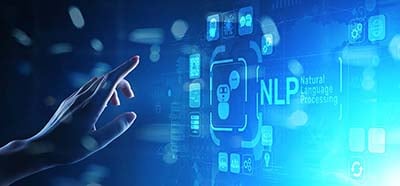Microsoft recently announced that they would have full exclusive access to OpenAI’s new language: GPT-3.
GPT-3: what is it?
GPT-3 – short for Generative Pre-trained Transformer 3 – is a new artificial intelligence language developed by research laboratory OpenAI. It uses deep learning to generate human-like text and can even generate life-like images. To use a very rough metaphor, it’s almost like a writer and a painter at the same time. A little more productive, of course. OpenAI initially did not want to publicly release it for fear it would be too powerful and would be misused for things like fake news, spam, misinformation.
Machine learning is the process whereby a computer receives a large amount of data in order to process it and carry out a specific task such as recognizing an image or understanding speech. In our case, GPT-3 has the ability to create speeches and images. For this process, we have neural networks, brain-inspired networks of connected algorithm called neurons. Passing the data between each other, they will modify the importance of data by giving it weights. At some point, the weight attributed will get very close to the desired value, at which point the system will be deemed to have “learned” how to carry the task it was designed to perform. So basically, give it a couple sentences and you can have a novel.

Much more powerful than its predecessor, GPT-2 – who already had 1.5 billion parameters to play with –, the GPT-3 comes with 175 billion parameters, or rather it is 117 times more precise. “Unlike most AI systems which are designed for one use-cases, OpenAI’s API today provides a general-purpose ‘text in, text out’ interface, allowing users to try it on virtually any English language task. GPT-3 is the most powerful model behind the API today, with 175 billion parameters,” OpenAI explains.
The final goal of the company is to create an Artificial General Intelligence or AGI, a piece of software so powerful that it would surpass any human, while still working for the good of humanity. However, we are far from it and the AI still has some limits. It did not pass the Turing test to determine if its intelligence was that of a human. Even if it is able to produce human-like text and life-like pictures, it is still unable to recognize some things and cannot answer basic questions such as which is heavier between a pencil and a toaster. What it can do though, is speak like Steve Jobs, and talk to you about Apple products as if you had the man himself in front of you – no info about his bad temper though.

Who is OpenAI?
OpenAI is a nonprofit artificial intelligence research laboratory based in San Francisco. One of their main areas of research is natural language processing (NLP), which is a subfield of linguistics, computer science and AI. It is the study of the interaction between computers and the human language and has many applications, such as speech recognition, natural language – basically the normal way of communicating with words and sentences – understanding and generation.
To sum up, they’re working on creating a machine that would be able to understand and exchange with us as if it was human.
The lab is not at the start if its relationship with Microsoft, as they were already using their Azure service and supercomputer to run their language – oh, and $1 billion funding.

Microsoft Azure
How is Microsoft able to help the research laboratory, you may ask? In addition to some pocket money, Microsoft has been helping OpenAI with its Azure cloud computing solution. The Azure service helps many companies to build, test, deploy and manage their software and applications. Launched in 2008, it offers Software-as-a-Service (SaaS), Platform-as-a-Service (PaaS) and Infrastructure-as-Service (IaaS) and supports most programming languages.
In other words, companies do not always have the computing power to handle their data and computing processes. Through Microsoft’s cloud computing platform, companies are able to store their data and run their computing processes through a virtualization technology. Basically, you can work with extremely powerful computers without owning any – you simply pay Microsoft Azure to use theirs, in a membership fee. The cloud is a set of physical servers distributed in one or several data centers around the world, running virtual hardware on behalf of clients.

Microsoft and OpenAI synergy?
As you may imagine, programs with such high degree of complexity need very powerful computers to run their program. And by very powerful, I do not mean the type of computer you can buy, but computers filling up entire rooms with fans as big as Airbus turbines – I might fall for exaggeration here, but you get the point.
Microsoft Azure thus partners with OpenAI to offer them one of the world’s most powerful computer, which is specifically designed to run OpenAI’s massive models such as GPT-3.
The essential thing to note is that Microsoft will have the exclusive license over this tech, with the possibility to come up with products far more advanced than anything we have ever seen. While that may seem scary – it does seem interesting that one of the most powerful tech we have, which was meant to be open to the public, falls in the hand of one of the richest companies in the world – Microsoft states that their goal is to empower users. Their vision is to open the technology to creators in order to nurture the same type of boom we saw with the Internet. They want everyone to play with it in order to come up with as many ideas and innovations for the world.

Microsoft also tried to develop its own NLG (Natural Language Generation), with its Turing NGL – named after the famous Alan Turing, google his name if you don’t know him, he basically invented computers. Although quite powerful, the language had “only” 17 billion parameter, ten times less than GPT-3.
Ryan Scott, Microsoft’s CTO, said in a blogpost announcing the partnership: "AI is becoming a platform – an environment upon which folks can build amazing new experiences, just like we’ve seen happen before with personal computers, mobile devices or the internet." They will be the first – and in this case, only – company to have access to such an advanced technology. Such exclusivity will give them access to GPT-3’s underlying code, which contains massive technical advancements they could potentially integrate into their products and service. This would mean a massive advance for Microsoft.

Sources:
https://www.morningbrew.com/emerging-tech/2020/09/23
https://www.sothis.tech/en/how-does-microsoft-azure-work-i/
https://openai.com/blog/image-gpt/?utm_source=morning_brew
https://en.wikipedia.org/wiki/GPT-3
Read our next article: 7 lessons from the must-read ‘Trading in the Zone’





